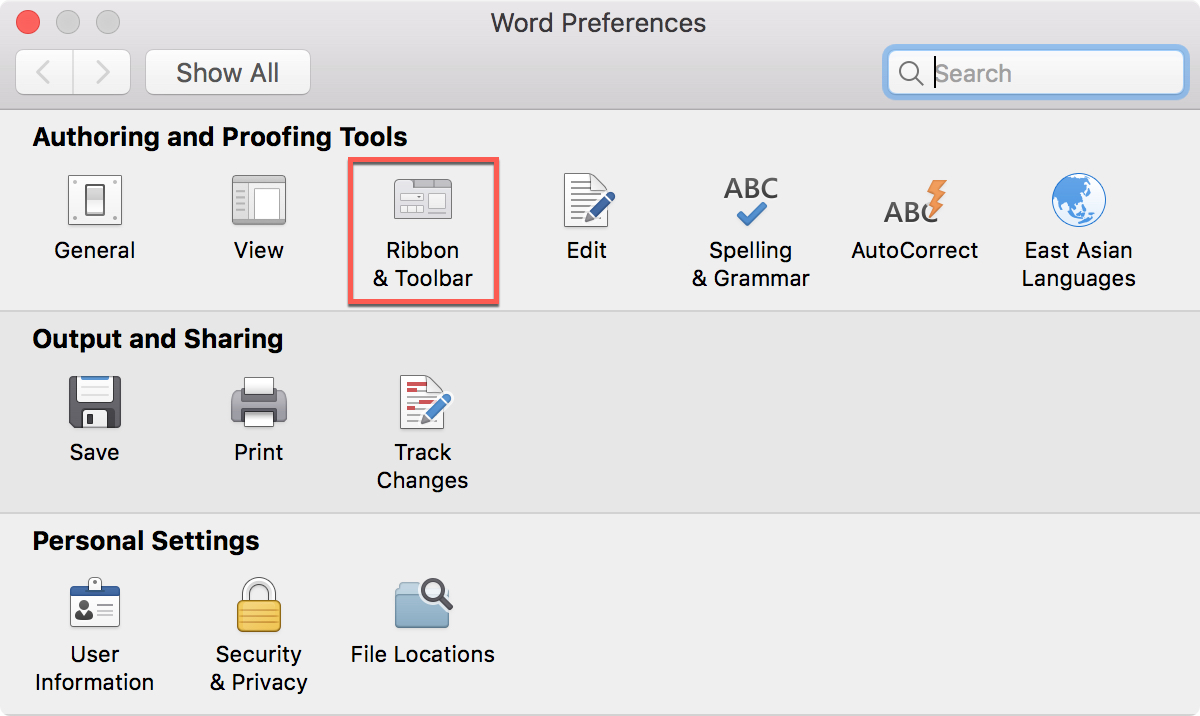
- Set tabs in word for mac how to#
- Set tabs in word for mac full#
- Set tabs in word for mac software#
- Set tabs in word for mac windows#
If you’re in the same boat, you’ll likely enjoy our many other tabs tricks covered here, which span across many apps and both major Apple OS platforms. Personally I really like tabs and find them very useful for managing individual apps with many documents and items open.
Set tabs in word for mac software#
Note this tab preference feature is only available in the more modern versions of Mac OS, and older Mac system software does not support the capability. That means not all apps will respect the preference, and obviously if an app does not support tabs in the first place this setting will have no effect on that app too. Remember, this is “prefer” tabs, not “require” tabs. Obviously this tutorial is aiming for the Always option, which is why we’re focusing on that here. Do any of the following: View a different document: Click the tab with the document’s title. This setting applies not just to Pages, but also to documents in other applications such as TextEdit, Numbers, and Keynote.
Set tabs in word for mac full#
* There are other settings options available for “Prefer tabs when opening documents” to suit your user preferences “Always”, “In Full Screen Only”, and “Manually”, if you only want to prefer tabs when apps are full screen then choose that option instead, and if you don’t like tabs much you’ll probably want to go for “Manually” so that you can avoid them. As you open documents, their titles appear in tabs in the tab bar below the Pages toolbar. The great thing about this setting is that you can enable it once in System Preferences, and it will carry over to all apps that support tabs whenever possible, so you won’t need to fidget with individual app preferences and settings for defaulting to tabs. The opened item will appear as a tab by default, rather than as a separate window. Now open any app which supports tabs TextEdit, Maps, Finder, Safari, Pages, Keynote, etc, and open a new window or open a document.
Set tabs in word for mac how to#
How to Prefer Tabs When Opening Documents Across Mac OS Apps If the Mac app supports tabs, it should respect this system setting toggle and not require individual app-specific fiddling. Precisely, this trick offers a single setting for all possible apps apps to prefer tabs with opening documents new or old, or creating new documents.
Set tabs in word for mac windows#
Select “ Import customization file” from the “ Import/Export” drop-down list.But there’s another way, by using a little-known Mac system setting that tells Mac apps to prefer using tabs for new windows and documents whenever possible. To import saved customizations, right-click on the ribbon and select “ Customize the Ribbon” from the pop-up menu. If you’ve backed up your ribbon customizations, you can get the custom tab back, as we show in the next section. So, be sure you want to remove the custom tab before you do so. NOTE: No confirmation dialog box displays when you remove a custom tab, either. To remove a custom tab you added to the ribbon, select the custom tab in the list of tabs on the right and then click the “ Remove” button. So be sure you want to reset all changes on the selected built-in tab. NOTE: No confirmation dialog box displays when you select “ Reset only selected Ribbon tab” from the “ Reset” drop-down list. For 2007 its: Office button Word Options Proofing AutoCorrect Options AutoFormat As You Type Check the Set left- and first-indent. Click the “ Yes” button to remove all the custom tabs you’ve created and all changes to built-in tabs. We’ll show you how shortly.Ī confirmation dialog box displays to make sure you want to reset all your customizations.

You remove custom tabs instead of resetting them. This option is not available for custom tabs.

To reset any built-in tabs you customized, select the tab you want to reset, and select “ Reset only selected Ribbon tab” from the “ Reset” drop-down list. On the “ Word Options” dialog box, select “ Reset all customizations” from the “ Reset” drop-down list. To remove all the customizations from the ribbon, right-click on the ribbon and select “ Customize the Ribbon” from the pop-up menu. You can copy this file to an external drive or a cloud service for storage. exportedUI” extension.Ĭlick the “ Save” button. Then enter a name for the file in the “ File name” edit box. On the “ File Save” dialog box, navigate to the location where you want to save your ribbon customizations. Then, select “ Export all customizations” from the “ Import/Export” drop-down list. To back up your customizations, right-click on the ribbon and select “ Customize the Ribbon” from the pop-up menu.


 0 kommentar(er)
0 kommentar(er)
